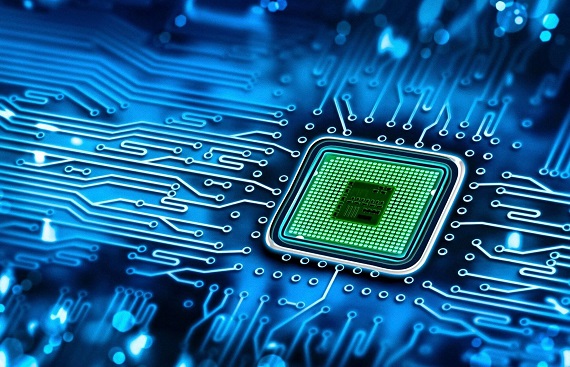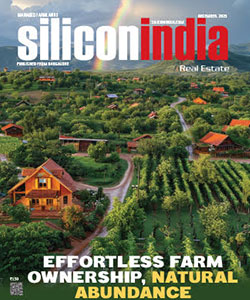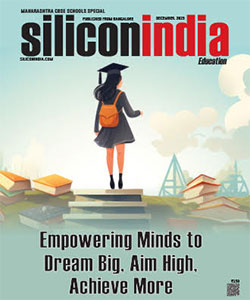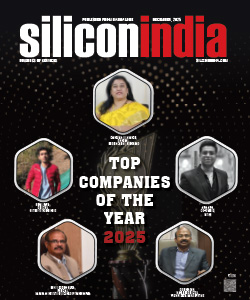India's Reviving Dream to Become the Chip Gaint

Our day begins with the texts and messages on our phones. As we travel to work, chips deal with the automotive engine. Laptops have made any place into our workplace, and chips are everywhere, gradually magnifying our lives manifold.
Moreover, for the two decades, India has dreamt of being a significant semiconductor manufacturer that will establish a shop on its shores, initiating the nation's journey alongside a foreseeable path toward chip glory. Unfortunately, the pandemic has restricted the growth in digital demand into a single year. The lockdown-related conversion of essential aspects of life — education, enterprise, and entertainment — to digital media had directed to a global chip shortage and raised a crisis.
In the recent incarnation of the dream, officials in India and Taiwan discuss enticing a new factory worth up to $7.5 billion. As per a report, the local government is expected to settle half the bill to set up and provide closer ties with New Delhi, ease the construction of a chip fab in South Asia needs to be on its priority list. Taiwan is particularly protectionist, and the absence of expertise in India is losing the contract.
Although eager to continue the dialogue with an increasingly important partner, Taiwan may take the lure and begin looking for candidates.
The challenges that the Indian chip-making industry faces today seem the same ones as at the turn of the century. The essential component of semiconductor manufacturing is a reliable and stable electricity supply.
The process is so fragile that even the briefest blackout or power surge can set off a halt that takes hours or days to reset. Abundant water supply, transport infrastructure, and experienced staff are among the other tentative blocks.
The days don't exist anymore when designing a component means building it. It has been proved by the rise of Taiwan Semiconductor Manufacturing Co. and Qualcomm Inc. The latter designs the excellent smartphone chips in the world, practicing sophisticated software and the best engineers. But there is a lack of skilled workforces to run a factory. In the meanwhile, TSMC has stayed out of the design business and dropped that to clients.
Presently, India possesses a large pool of chip designers. Still, the list of process engineers is much shorter and not long enough to run a Taiwanese front-end chip factory — where microscopic transistors are engraved onto silicon.
Under the Make in India campaign, novel factories have opened or expanded across the country, many of which are run by Taiwanese electronics majors. This trend reinforced the belief that local production is a path to selling more goods there. But it results in levying a hefty tariff on imported smartphones being a greater incentive to develop locally, with even Apple Inc.'s iPhones accumulating onshore.
Companies like Foxconn Technology Group and Wistron Corp expanded into India because the country already had an established electronics assembly business where allowances are low, labor costs are a factor, and labor is required. The expanse of the tariffs justifies the requirements, and it is not the same for chips. There is no regional history of production, so tariffs would accelerate prices, not spur a rash of onshoring.
It's also possible that India's renewed push into chips comes amidst rising rivalry with China, a country that's already invested tens of billions of dollars to convert a semiconductor powerhouse. Yet New Delhi should be studying from Beijing's mistakes and rethink its enthusiasm to follow suit. The nation's scenario is commodity memory chips and a small number of processors using technology. When it comes to semiconductors, India most surely doesn't wish to copy China.
Instead, it expects to be the next Taiwan. Unfortunately, it's not been effective on deals worth around $ 5 billion individually.
Now, India is encouraging dreams of being a player in the chip space. It also supports the nation to move its economy up the value chain from simple labor-intensive assembly to high-tech manufacturing. One believes TSMC being high among the targets given it's the global leader and possesses a client list consisting of Apple, Qualcomm, Nvidia Corp., and even Intel Corp.
Nevertheless, smaller rival United Microelectronics Corp. might be interested in acknowledging what New Delhi has to offer. Its spending budget is lower, margins thinner, and technology older, so it has a far more enormous appetite to acknowledge what sweeteners might be possible. But India should also be careful of any entity that sets up only because of the benevolence that's being doled out.
But India should chase the correct types of companies. Enthusiastic about getting their name in a press release alongside blue-ribbon names and required to consider chip packaging and testing.
To the semiconductor elitists, outsourced assembly and test (OSAT) is recognized as the low-end part of the process compared to the high-cost lithographic steps that produce the underlying component. It's the leading-edge, multi-billion dollar factories that manage front-end wafer fabrication, while the more low-key plants test for flaws, attach wires, and then wrap them in protective packaging. This may not sound attractive, but it's still a profoundly technical and fundamental aspect of manufacturing.
Fortunately for Taipei and New Delhi, the global leaders in packaging and testing are established in Taiwan. After allying with local rivals, Kaohsiung-based ASE Technology Holding Co. is the best, with Hsinchu-based Powertech Technology Inc. fourth.
And ASE may be seeking an excuse to diversify further. The recent power crisis in China created pressure on the Taiwan firm to close its Kunshan factory outside Shanghai for almost five days. Such furies are rare, but with labor costs rising and power and pollution concerns in China intensifying, the time is ripe for ASE to think about breaking ground in India.
New Delhi might consider it wants a chip manufacturing facility to realize a long-held dream. Still, the government would be better off saving its money and attracting more suitable partners in testing and assembly.



